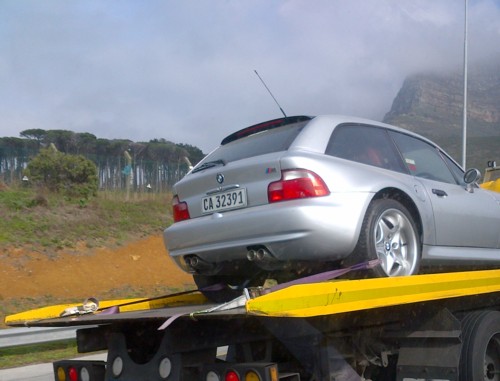My EPC light
If you've had your VW, Audi, SKODA or SEAT for a while, you're probably familiar with the EPC light and already experienced its wrath. If you haven't encountered the EPC warning light as yet, then you are definitely one of the lucky ones, because I know of several VW Polo, Seat Ibiza, VW Jetta, VW CC, Passat, Audi A3, Audi A6, Seat Leon and even Porsche owners with odometer readings as low as 1500 Kilometers, who got spooked by the EPC light when it first stuck. This EPC light is known to trigger instant panic and fear in many VAG car owner, and I don't blame them, since it can be a scary and dangerous experience, especially when the car goes into limp mode when you're overtaking or the engine just dies when exiting a freeway off-ramp or when entering a highway on-ramp during peak hour traffic.Electronic Power Control
However, if you have no idea what an EPC light or an EPC fault is, nor why this warning light turns on, then you should do yourself a solid and continue reading. In a nutshell, the EPC warning light is a standard feature in all ODB-II compliant models of Volkswagen, SEAT, SKODA and Audi vehicles. Most of them, are fitted with 'drive-by-wire' technology, though neither are exclusive to VAG cars. And when I say VAG cars, I also mean Porsche, Bentley, Bugatti, Lamborghini and Ducati. Toyota, Honda, Ford, Mercedes also has it, in fact, virtually all cars manufactured post 1996 have an EPC warning light. EPC is an acronym for Electronic Power Control, and its a warning light that resides inside the instrument cluster display.EPC Light
Nonetheless, the EPC light is not all doom and gloom. It is there for a reason, and that reason is to safeguard the car and the engine from damage or destruction, especially considering what they cost to repair these days, let alone the cost to have an engine overhauled. Many people are under the misapprehension that the EPC light indicates an issue with the cars computerized system, whereas mechanics tend to echo that the EPC light indicates a potential engine malfunction, though that's not strictly true either.MIL
Before we continue, I just needed to add that when the engine malfunctions, it illuminates the Malfunction Indicator Lamp (MIL) aka Check engine light (CEL), which is indicative of a computerized engine-management system malfunction. It even has an amber/orange icon of an engine, so as to draw your attention to the engine. Furthermore if this amber icon engine light is steadily illuminated, it indicates a minor engine fault but when it blinks it signifies a major engine fault. On the other hand, the EPC (Electronic Power Control) warning light is a distinctly separate light from the MIL or CEL because it is related to a different function.The more appropriate answer to 'What is an EPC light?' would be that the Electronic Power Control warning light, indicates a malfunction in your VW, Audi, SKODA or SEAT's throttle control system, though once again that's also not totally accurate either. So let me throw so light on the subject. The EPC light is in fact a diagnostic test light. So when the car's ignition is first switched on, the EPC light is illuminated for about three seconds. If there are no faults in the EPC system the light will automatically extinguish.
Drive by Wire
This three second time period is the duration of a self-diagnostic test. Effectively the Motronic ECM (J220) checks for malfunctions in the Electronic Power Control (Torque system) accelerator system (drive-by-wire system), which includes the Throttle Body Drive Stepless Motor (G186) with its dual independent Throttle Drive Angle Potentiometers (G187 & G188), the Accelerator Pedal Module with its dual independent Throttle Position Sensing Potentiometers (G79 &G185), the wiring harnesses that connects them all together and its associated sensor inputs from the Cruise Control System, the Anti-lock Brake System (ABS), the Oxygen Sensor Control, the Automatic Transmission and the Air Conditioning System, etc.Charge Air Path
Here Air conditioning system mean all components involved in conditioning the air in the inlet manifold prior to combustion, implying the Throttle body / Mass Air Flow (MAF) sensor G70 and not A/C as in HVAC. That being said, the functionality of an Electronic Throttle Control (drive-by-wire system) can regulate the Charge Air Path far more accurately than a physical cable between the accelerator pedal and the throttle valve.NonVolatile Memory
This being the case, by the time the EPC light illuminates on the dashboard in response to some sensor detecting a problem whilst driving, the problem already occurred. The EPC warning is just a way to tell you that there was a glitch in the EPC (drive by wire system) and generally remains lit until the fault is cleared. The EPC light is known as K132 and is turned on by the Motronic ECM by providing the Ground connection that keeps the light burning. At the same time, a DTC is registered and stored in non-volatile memory for later inspection.Limp Mode
So the key piece of equipment to solving any EPC problem or issue is a diagnostic scanner. The fault below shows that the brake light switch F was the culprit that caused the EPC fault. Bearing in mind, that the Cruise control get its cancellation signal from the brake light when the brake pedal is depressed. When a brake light is fused or the dual contact brake switch goes open circuit and can't provide the requisite signal, the cruise control cannot be cancelled. The ECM detects this condition and construes it as a safety issue and sends the car into limp mode.Fault Codes
Essentially the EPC circuit prevented an accident from happening. Implying the brakes would work but the engine would still run at high rev set by the cruise control, meaning the brakes would be ineffective to bring the car to a stop. For safety reasons the EPC system closes the throttle valve to a predetermined position the brake pedal and the accelerator pedal are depressed simultaneously. However if the ECU detects that the brake was depressed before the accelerator, then acceleration will be carried out.1 Fault Found:
16955 - Brake Switch (F)
P0571 - 35-10 - Implausible Signal - Intermittent
The fault below shows that there is an electrical malfunction in the Drive by Wire circuit causing the EPC light to illuminate. After clearing the fault code, the EPC light just comes back on. The ECU was suspected and replaced but didn't solved the problem. It turned out that the wiring harness between the ECU and the instrument cluster.
1 Fault Found:
18084 - EPC Warning Lamp (K132) Circuit: Electrical Malfunction
P1676 - 35-00 - -
The fault below was on an Audi where signal from the Transmission Control Module (TCM) to the ECU was intermittent causing her to go into limp mode and idle really rough. Turned out that the TCM got wet from rain water that leaked into the carpets.
1 Fault Found:
18265 - Load Signal: Error Message from ECU
P1857 - 35-10 - - - Intermittent






+SCHEMATIC.jpg)
